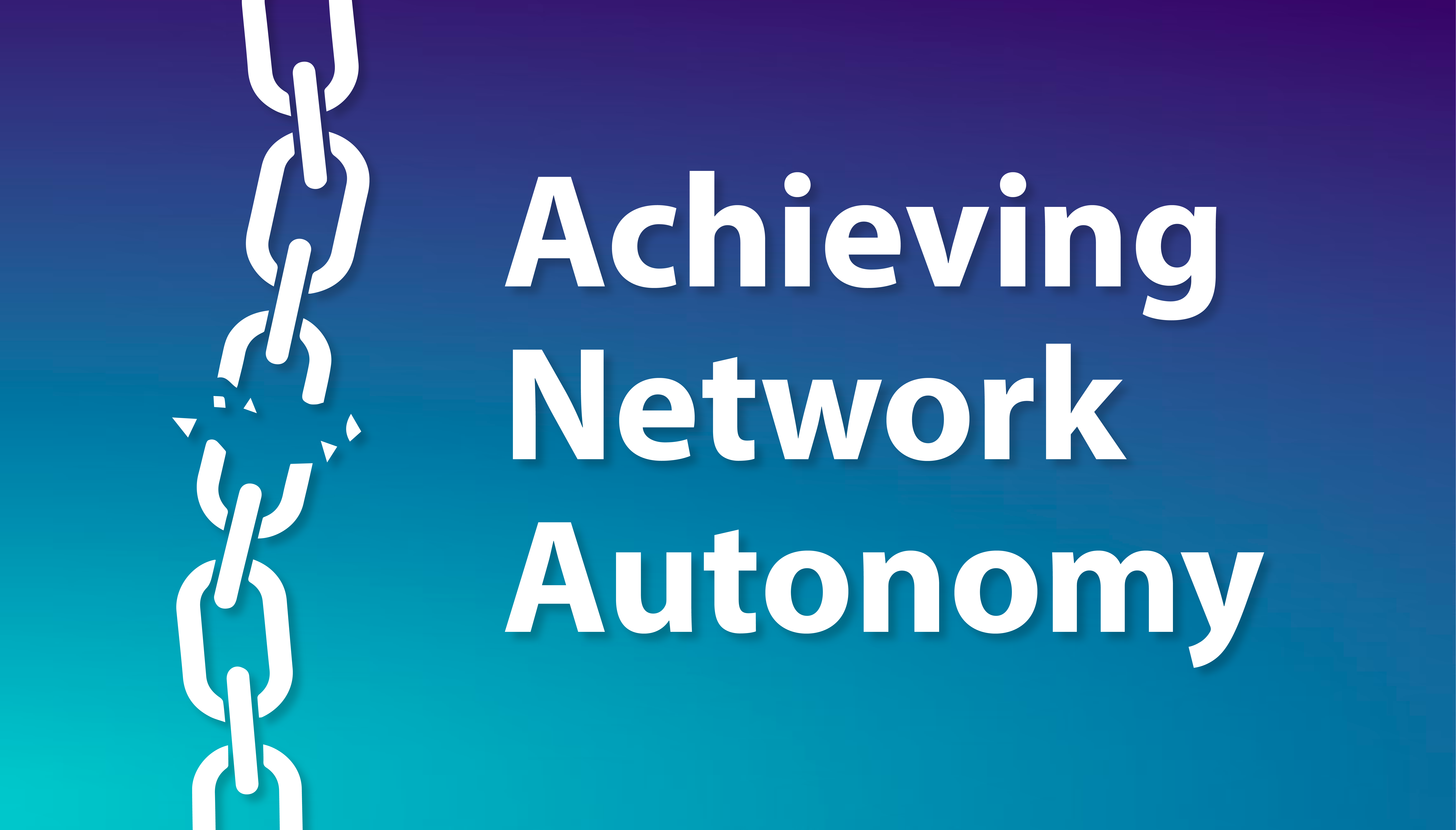
Achieving Network Autonomy
Do you have autonomy over your network? Have you considered what happens to your network if you decide to switch providers or if your Internet Service Provider (ISP) asks you to return the IP addresses they assigned to you? Getting space directly from ARIN is the way to ensure true autonomy over your network. Let’s talk about why.
What do we mean by ‘Network Autonomy’?
Network autonomy means that your organization directly holds the rights for IPv4 and IPv6 address blocks. This occurs when those addresses were provided to you directly by ARIN or its predecessors and can be considered portable. You can use them with any ISP(s) you choose, and, should you cease service with those ISPs, you can take them with you because there is no need to return the addresses to the ISP.
In contrast, IP addresses you obtain from an ISP are generally considered non-portable, meaning if you cease service with the ISP from whom you obtained them, you’ll need to return them to that ISP. If you build your network using provider-assigned addresses, and the ISP from whom you obtained them takes them back, you can end up in a very challenging situation. Additionally, since you likely are no longer a customer of the ISP, there is no guarantee you would even be contacted in the event this happened.
How to Check the IP Addresses in Your Network
Here’s a quick way to check the status of who controls the IP addresses in your network: Go to ARIN’s Whois and enter an IP address being used in your network. If you see the block is a “direct allocation” to your organization, that means the block is registered directly by your organization and is considered portable. Hopefully the information is current and accurate; if not please contact us, so we can help you update the record. That’ll help ensure you can quickly make changes to your records when necessary.
If the block is a “reassignment” or a “reallocation,” that means it is space obtained from an ISP and considered non-portable. If you are still using the ISP from whom you obtained those addresses, you’re most likely OK. You may still want to obtain your own portable addresses from ARIN to ensure network autonomy, but you probably have some time to do so. If not — well, you may find yourself in a scenario where you could potentially wake up to find the addresses in your network are unusable. In that case, we invite you to review the steps below to find out how to get your own IPv4 and IPv6 addresses from ARIN.
Own Your Space: Here’s How ARIN Can Help
IPv6 is the addressing protocol of the future and a great place to start building your autonomy with directly assigned IP address space from ARIN. Now is the time to begin your IPv6 request, and ARIN is here to support you. We have plenty of resources on our website including this step-by-step guide.
The qualification criteria are simple:
- Have (or qualify for) an IPv4 block, or
- IPv6 multi-homing, or
- 50 projected customers within 5 years (ISPs), or
- 200 IPv6 subnets/2000 IPv6 addresses used within one year or 13+ total sites (end users), or
- Technical explanation as to why provider-assigned addresses are unsuitable
We also have an IPv6 transition policy which can help. Once you register an IPv6 block (it’s quick and easy), you become eligible to request a /24 of IPv4 space as frequently as once every six months to assist with your IPv6 deployment. The basic requirement to be eligible is that you use each /24 specifically for IPv6 transition, which includes things like dual-stacking key infrastructure and numbering translation pools.
We have an IPv4 Waiting List through which we distribute IPv4 addresses that become available. Applying is generally quick and easy. The main requirements are that you:
- Have efficiently used any previous space you’ve been issued.
- Have a /20 or less (4,096 IPv4 addresses) through ARIN already.
- Request up to a /22 based on your 24-month projected need.
Based on availability, we fill waiting list requests each quarter. While we can’t guarantee how long it will take for a block to become available, it’s free to join the list.
And of course, if you haven’t yet, we recommend you request your own ASN if you plan to multi-home, peer, or use a unique routing policy for your network. Once you obtain IP addresses directly from ARIN, you will have network autonomy! We hope this helps you better understand the real-world impact of network autonomy and provides an opportunity to avoid potential disruptions to your business in the future.
Recent blogs categorized under: Tips
GET THE LATEST!
Sign up to receive the latest news about ARIN and the most pressing issues facing the Internet community.
SIGN ME UP →Blog Categories
Updates • Public Policy • RPKI • ARIN Bits • Fellowship Program • Data Accuracy • Security • Tips • Caribbean • Grant Program • IPv6 • Business Case for IPv6 • Internet Governance • Elections • Outreach • Training • IPv4 • Customer Feedback • IRR


